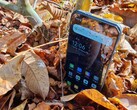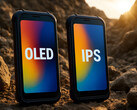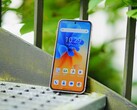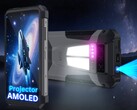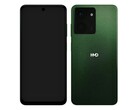Verdict: Oukitel WP300
As with most of the manufacturer's phones, the Oukitel WP300 is all about whether it suits your individual needs.
The phone is undeniably bulky and heavy, but in return it offers impressive off-grid endurance and a handful of unusual features. If you need a bright torch (or even two, when counting the standard LED flash), regularly use a headset, or want basic smartwatch functionality, this device combines it all in a single package.
The WP300 delivers enough performance for everyday tasks, features a bright display, and avoids PWM flickering. However, the often blurry camera images are underwhelming, and while the speaker gets impressively loud, its audio quality remains only average.
All in all, the Oukitel WP300 is a highly durable specialist tool that only proves its true practicality in specific scenarios.
Pros
Cons
Price and availability
On Amazon.de, the Oukitel WP300 is currently listed for around €470 (≈ $510 USD), with a €60 (≈ $65 USD) voucher available.
You can also purchase it directly from the manufacturer, usually in the same €400–450 price range (depending on current promotions).
On Oukitel's UK store, the Oukitel WP300 is currently listed at a sale price of £320.70 (≈ $430.60 USD), down from the regular £447.49 (≈ $600.10 USD)
Table of Contents
- Verdict: Oukitel WP300
- Specifications
- Chassis and features: What does "semi-modular" really mean?
- Connectivity and operation: WiFi 6 and more
- Software and sustainability: update policy unclear
- Cameras: partially blurred images
- Display: bright and PWM-free
- Performance, emissions and battery life: power and staying power
- Notebookcheck overall rating
- Comparable devices at a glance
Specifications
Chassis and features: What does "semi-modular" really mean?
Bulky and heavy, the Oukitel WP300 tips the scales at 514 grams, which may be a consideration for some users. Unsurprisingly, the manufacturer includes a neck strap for carrying convenience. At over 2.3 centimetres thick, the phone only fits in particularly large trouser pockets.
The back of our red review unit is visually striking, with horizontal stripes and a textured waffle finish around the camera module. Adjacent to it, in the default configuration, is the integrated camping light. Controlled via a dedicated app, it emits up to 400 lumens, roughly equivalent to a traditional 40-watt incandescent bulb or a 5-watt LED. It can also be removed and operated manually using a small button on its side.
Alternatively, users can attach a small secondary display to the rear. This module, included in the box, features an integrated earbud and microphone on its reverse, allowing it to function as a headset. With the supplied strap, it can also be worn as a smartwatch when detached from the phone.
| SD Card Reader - average JPG Copy Test (av. of 3 runs) | |
| Samsung Galaxy XCover 7 Pro (Angelbird V60) | |
| Doogee Blade 20 Turbo (Angelbird V60) | |
| Average of class Smartphone (5.72 - 58.9, n=69, last 2 years) | |
Cross Platform Disk Test (CPDT)
Connectivity and operation: WiFi 6 and more
WiFi 6 is the fastest wireless standard available on the WP300, enabling access to both the 2.4 GHz and 5 GHz bands.
In testing with the Asus ROG Rapture AXE11000 router, data transfer speeds were solid, though some competing devices achieved marginally better results. Occasional minor dips in speed were also observed.
The Oukitel smartphone supports 5G and covers enough frequency bands to enable mobile internet use while travelling abroad. However, the WP300 does not quite qualify as a true world phone.
The 120 Hz display responds to touch inputs quickly and reliably. On the left side of the chassis, there is a programmable button that can be used to launch apps or execute commands.
A fingerprint sensor is integrated into the standby button. Once set up, it recognises stored fingerprints reliably, though there is a slight delay before the phone unlocks. Facial recognition via the front-facing camera is also available as an unlocking method.
| Networking | |
| Oukitel WP300 | |
| iperf3 transmit AXE11000 | |
| iperf3 receive AXE11000 | |
| Doogee Blade 20 Turbo | |
| iperf3 transmit AXE11000 | |
| iperf3 receive AXE11000 | |
| Samsung Galaxy XCover 7 Pro | |
| iperf3 transmit AXE11000 6GHz | |
| iperf3 receive AXE11000 6GHz | |
| Oukitel WP200 Pro | |
| iperf3 transmit AXE11000 | |
| iperf3 receive AXE11000 | |
| Average 802.11 a/b/g/n/ac/ax | |
| iperf3 transmit AXE11000 | |
| iperf3 receive AXE11000 | |
| iperf3 transmit AXE11000 6GHz | |
| iperf3 receive AXE11000 6GHz | |
| Average of class Smartphone | |
| iperf3 transmit AXE11000 | |
| iperf3 receive AXE11000 | |
| iperf3 transmit AXE11000 6GHz | |
| iperf3 receive AXE11000 6GHz | |
Software and sustainability: update policy unclear
The system software is based on Android 15. At the time of testing, the security patches were dated March 2025, making them outdated. The manufacturer does not specify how frequently or for how long updates will be provided.
There are no visible sustainability efforts on the device itself, and the packaging also makes use of plastic film.
Cameras: partially blurred images
A 108-megapixel sensor serves as the main rear camera. While resolution is high on paper, images sometimes appear partially blurred, and the sensor struggles slightly with dynamic range in high-contrast scenes.
4K video recording is supported, although only at 30 fps. Autofocus occasionally falters, especially with fast-moving subjects, but footage remains usable if the framing stays relatively steady.
A dedicated macro camera is also included, but with a resolution of just 2 megapixels, it delivers limited detail.
At the front, a 32-megapixel camera handles selfies. These generally turn out well, with decent sharpness and colour reproduction.
Image comparison
Choose a scene and navigate within the first image. One click changes the position on touchscreens. One click on the zoomed-in image opens the original in a new window. The first image shows the scaled photograph of the test device.
Hauptkamera PflanzeHauptkamera UmgebungHauptkamera Low Light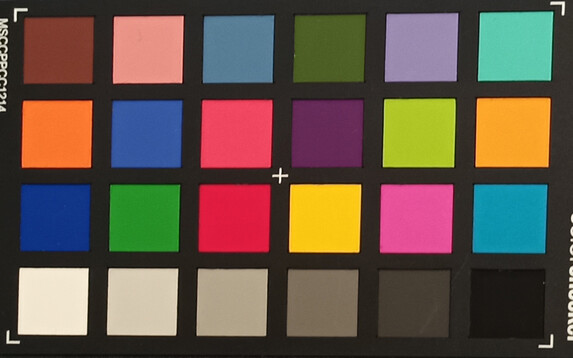

Display: bright and PWM-free
The Oukitel phone features an IPS display with a resolution of 2460 × 1080 pixels, putting it on par with others in its class. Content appears sharp, and the screen brightness is excellent, reaching up to 860 cd/m².
A strong blue cast does impair colour accuracy somewhat. On the positive side, there is no need to worry about PWM flickering. Even at very low brightness levels, our measurements detected no signs of modulation.
It is unfortunate that the device lacks Widevine L1 certification, which prevents video streaming platforms from displaying content in HD or 4K resolution.
| |||||||||||||||||||||||||
Brightness Distribution: 93 %
Center on Battery: 860 cd/m²
Contrast: 1870:1 (Black: 0.46 cd/m²)
ΔE ColorChecker Calman: 7.73 | ∀{0.5-29.43 Ø4.78}
ΔE Greyscale Calman: 7.8 | ∀{0.09-98 Ø5}
81.2% sRGB (Calman 2D)
Gamma: 2.293
CCT: 8051 K
| Oukitel WP300 IPS, 2460x1080, 6.8" | Doogee Blade 20 Turbo IPS, 1612x720, 6.6" | Samsung Galaxy XCover 7 Pro PLS, 2408x1080, 6.6" | Oukitel WP200 Pro AMOLED, 2412x1080, 6.7" | |
|---|---|---|---|---|
| Screen | -14% | -13% | 12% | |
| Brightness middle (cd/m²) | 860 | 475 -45% | 495 -42% | 512 -40% |
| Brightness (cd/m²) | 841 | 441 -48% | 466 -45% | 511 -39% |
| Brightness Distribution (%) | 93 | 88 -5% | 86 -8% | 98 5% |
| Black Level * (cd/m²) | 0.46 | 0.43 7% | 0.58 -26% | |
| Contrast (:1) | 1870 | 1105 -41% | 853 -54% | |
| Colorchecker dE 2000 * | 7.73 | 7.83 -1% | 5.85 24% | 5.01 35% |
| Colorchecker dE 2000 max. * | 15.66 | 11.09 29% | 9.78 38% | 6.93 56% |
| Greyscale dE 2000 * | 7.8 | 8.3 -6% | 7 10% | 3.5 55% |
| Gamma | 2.293 96% | 2.68 82% | 2.231 99% | 2.241 98% |
| CCT | 8051 81% | 8806 74% | 8691 75% | 7137 91% |
* ... smaller is better
Screen Flickering / PWM (Pulse-Width Modulation)
| Screen flickering / PWM not detected | |||
In comparison: 53 % of all tested devices do not use PWM to dim the display. If PWM was detected, an average of 8121 (minimum: 5 - maximum: 343500) Hz was measured. | |||
Display Response Times
| ↔ Response Time Black to White | ||
|---|---|---|
| 19.5 ms ... rise ↗ and fall ↘ combined | ↗ 10.4 ms rise | |
| ↘ 9.1 ms fall | ||
| The screen shows good response rates in our tests, but may be too slow for competitive gamers. In comparison, all tested devices range from 0.1 (minimum) to 240 (maximum) ms. » 42 % of all devices are better. This means that the measured response time is similar to the average of all tested devices (20.2 ms). | ||
| ↔ Response Time 50% Grey to 80% Grey | ||
| 28.3 ms ... rise ↗ and fall ↘ combined | ↗ 15.3 ms rise | |
| ↘ 13 ms fall | ||
| The screen shows relatively slow response rates in our tests and may be too slow for gamers. In comparison, all tested devices range from 0.165 (minimum) to 636 (maximum) ms. » 37 % of all devices are better. This means that the measured response time is better than the average of all tested devices (31.6 ms). | ||
Performance, emissions and battery life: power and staying power
Thanks to the MediaTek Dimensity 7050, the Oukitel WP300 delivers decent performance levels. While it can't quite keep up with the Galaxy XCover 7 Pro, it is generally sufficient for smooth everyday use. The fast storage certainly contributes to this as well.
After extended periods under load, the casing does warm up noticeably, but performance is barely throttled.
The speaker can reach a volume of over 91 dB(A), which is impressively loud. However, sound quality deteriorates at higher volumes, especially with music, so a moderate volume setting is preferable. A wide range of audio codecs is supported for wireless Bluetooth transmission, including less common ones such as Opus.
The massive battery holds more than 16,000 mAh and achieved nearly 30 hours in our Wi-Fi test. Under typical usage, two days without charging should present no issue under typical use. Even with heavier use, a day without access to power should be manageable. Charging takes time, however, as the device supports a maximum input of 45 watts, meaning it can take up to six hours to fully recharge the battery.
| Oukitel WP300 | Doogee Blade 20 Turbo | Samsung Galaxy XCover 7 Pro | Oukitel WP200 Pro | Average 512 GB UFS 3.1 Flash | Average of class Smartphone | |
|---|---|---|---|---|---|---|
| AndroBench 3-5 | -2% | -41% | 151% | 109% | 115% | |
| Sequential Read 256KB (MB/s) | 1836.5 | 1873.2 2% | 1043.4 -43% | 997.7 -46% | 1872 ? 2% | 2223 ? 21% |
| Sequential Write 256KB (MB/s) | 1520.8 | 1250.2 -18% | 232.6 -85% | 936.4 -38% | 1324 ? -13% | 1838 ? 21% |
| Random Read 4KB (MB/s) | 296 | 280.9 -5% | 194.4 -34% | 368.5 24% | 288 ? -3% | 295 ? 0% |
| Random Write 4KB (MB/s) | 64.8 | 72.4 12% | 63.5 -2% | 494.1 663% | 355 ? 448% | 335 ? 417% |
(-) The maximum temperature on the upper side is 46.7 °C / 116 F, compared to the average of 35.2 °C / 95 F, ranging from 21.9 to 247 °C for the class Smartphone.
(+) The bottom heats up to a maximum of 37.1 °C / 99 F, compared to the average of 34 °C / 93 F
(+) In idle usage, the average temperature for the upper side is 29 °C / 84 F, compared to the device average of 32.9 °C / 91 F.
3DMark Steel Nomad stress test
| 3DMark | |
| Wild Life Stress Test Stability | |
| Oukitel WP300 | |
| Doogee Blade 20 Turbo | |
| Samsung Galaxy XCover 7 Pro | |
| Oukitel WP200 Pro | |
| Wild Life Extreme Stress Test | |
| Oukitel WP300 | |
| Doogee Blade 20 Turbo | |
| Samsung Galaxy XCover 7 Pro | |
| Oukitel WP200 Pro | |
| Steel Nomad Light Stress Test Stability | |
| Oukitel WP300 | |
| Doogee Blade 20 Turbo | |
Oukitel WP300 audio analysis
(+) | speakers can play relatively loud (91.6 dB)
Bass 100 - 315 Hz
(-) | nearly no bass - on average 17.8% lower than median
(±) | linearity of bass is average (10.7% delta to prev. frequency)
Mids 400 - 2000 Hz
(+) | balanced mids - only 2.9% away from median
(+) | mids are linear (4% delta to prev. frequency)
Highs 2 - 16 kHz
(±) | higher highs - on average 7% higher than median
(±) | linearity of highs is average (10.1% delta to prev. frequency)
Overall 100 - 16.000 Hz
(±) | linearity of overall sound is average (17.3% difference to median)
Compared to same class
» 11% of all tested devices in this class were better, 8% similar, 81% worse
» The best had a delta of 11%, average was 35%, worst was 134%
Compared to all devices tested
» 31% of all tested devices were better, 8% similar, 60% worse
» The best had a delta of 4%, average was 24%, worst was 134%
Oukitel WP200 Pro audio analysis
(+) | speakers can play relatively loud (89.4 dB)
Bass 100 - 315 Hz
(-) | nearly no bass - on average 28.5% lower than median
(±) | linearity of bass is average (11.6% delta to prev. frequency)
Mids 400 - 2000 Hz
(±) | higher mids - on average 5% higher than median
(+) | mids are linear (6.3% delta to prev. frequency)
Highs 2 - 16 kHz
(±) | higher highs - on average 6.3% higher than median
(±) | linearity of highs is average (11.2% delta to prev. frequency)
Overall 100 - 16.000 Hz
(±) | linearity of overall sound is average (22.2% difference to median)
Compared to same class
» 46% of all tested devices in this class were better, 7% similar, 47% worse
» The best had a delta of 11%, average was 35%, worst was 134%
Compared to all devices tested
» 64% of all tested devices were better, 6% similar, 30% worse
» The best had a delta of 4%, average was 24%, worst was 134%
| Oukitel WP300 16000 mAh | Doogee Blade 20 Turbo 10300 mAh | Samsung Galaxy XCover 7 Pro 4350 mAh | Oukitel WP200 Pro 8800 mAh | |
|---|---|---|---|---|
| Battery runtime | -22% | -51% | -14% | |
| WiFi v1.3 (h) | 30 | 23.3 -22% | 14.8 -51% | 25.7 -14% |
| H.264 (h) | 16.1 |
Notebookcheck overall rating
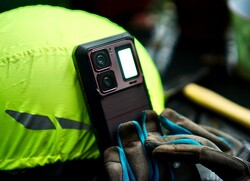
The Oukitel WP300 is a highly durable outdoor smartphone with a distinctive feature set, including a built-in torch and a modular accessory that can function as a smartwatch, headset, or secondary display. While undeniably bulky, it offers practical tools for off-grid scenarios.
Oukitel WP300
- 07/15/2025 v8
Florian Schmitt
Comparable devices at a glance
Image | Model / Review | Price | Weight | Drive | Display |
|---|---|---|---|---|---|
| Oukitel WP300 MediaTek Dimensity 7050 ⎘ ARM Mali-G68 MP4 ⎘ 12 GB Memory, 512 GB | Amazon: 1. $9.69 MAOUICI Tempered Glass for O... 2. $399.99 OUKITEL WP33 Pro 5G Rugged S... 3. $9.99 Shantime [2 Pack Tempered Gl... List Price: 469€ | 514 g | 512 GB UFS 3.1 Flash | 6.80" 2460x1080 395 PPI IPS | |
| Doogee Blade 20 Turbo MediaTek Dimensity 7050 ⎘ ARM Mali-G68 MP4 ⎘ 8 GB Memory, 256 GB | Amazon: $259.99 List Price: 379€ | 331 g | 256 GB UFS 3.1 Flash | 6.60" 1612x720 267 PPI IPS | |
| Samsung Galaxy XCover 7 Pro Qualcomm Snapdragon 7s Gen 3 ⎘ Qualcomm Adreno 810 ⎘ 6 GB Memory, 128 GB UFS 2.1 | Amazon: $576.99 List Price: 609€ | 240 g | 128 GB UFS 2.1 Flash | 6.60" 2408x1080 400 PPI PLS | |
| Oukitel WP200 Pro MediaTek Dimensity 8200 ⎘ ARM Mali-G610 MP6 ⎘ 24 GB Memory, 1024 GB | Amazon: $749.99 List Price: 645€ | 311 g | 1 TB UFS 4.0 Flash | 6.70" 2412x1080 394 PPI AMOLED |
Transparency
The selection of devices to be reviewed is made by our editorial team. The test sample was provided to the author as a loan by the manufacturer or retailer for the purpose of this review. The lender had no influence on this review, nor did the manufacturer receive a copy of this review before publication. There was no obligation to publish this review. As an independent media company, Notebookcheck is not subjected to the authority of manufacturers, retailers or publishers.
This is how Notebookcheck is testing
Every year, Notebookcheck independently reviews hundreds of laptops and smartphones using standardized procedures to ensure that all results are comparable. We have continuously developed our test methods for around 20 years and set industry standards in the process. In our test labs, high-quality measuring equipment is utilized by experienced technicians and editors. These tests involve a multi-stage validation process. Our complex rating system is based on hundreds of well-founded measurements and benchmarks, which maintains objectivity. Further information on our test methods can be found here.




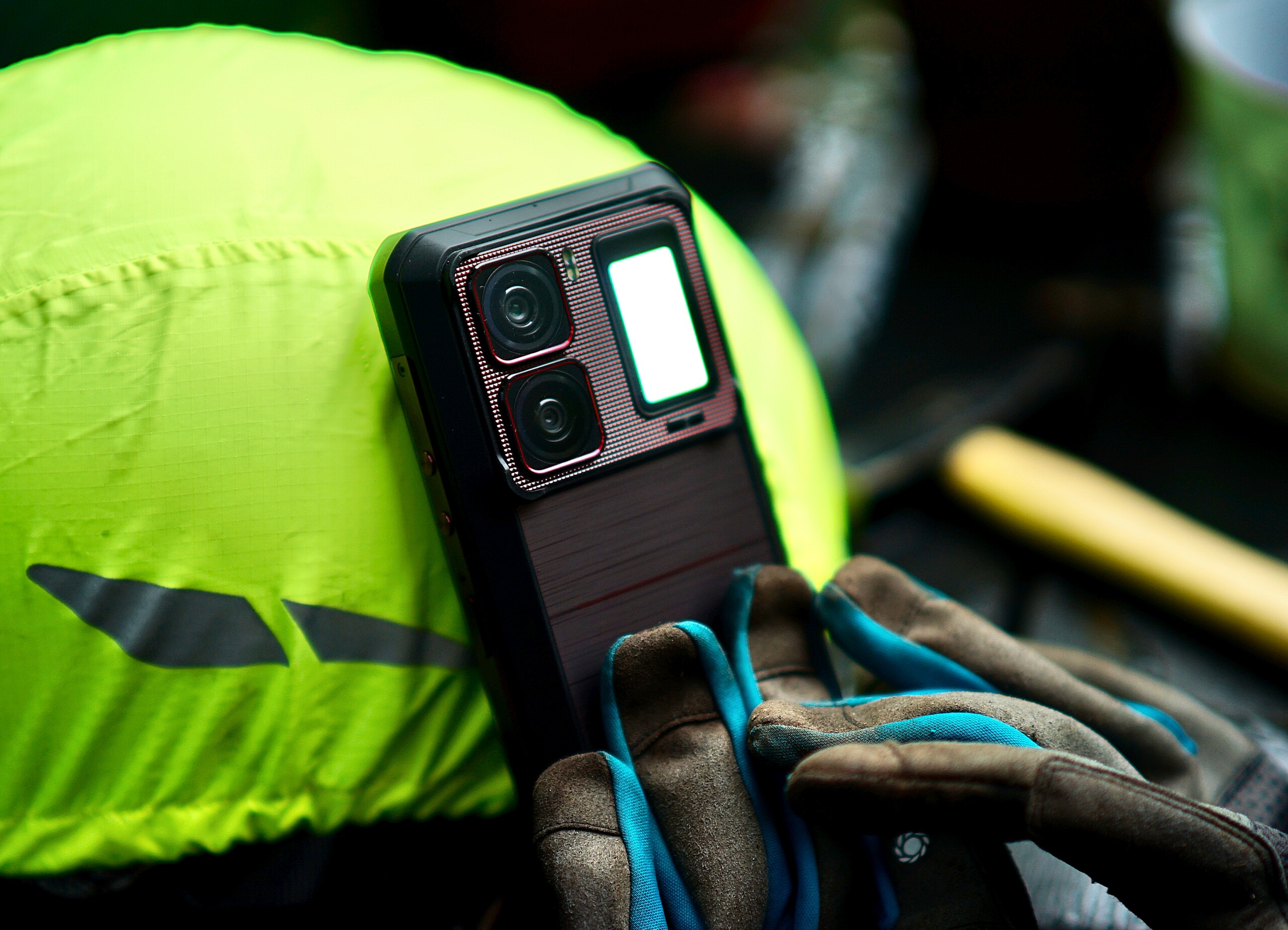

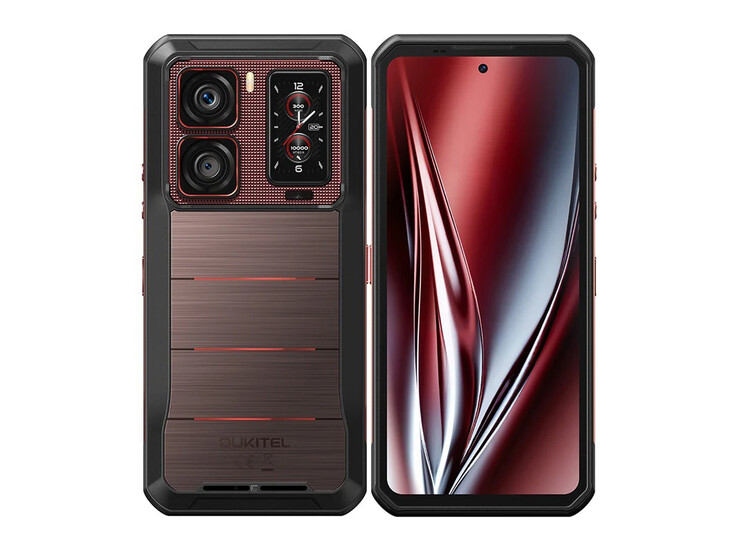
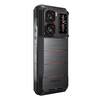
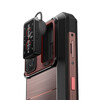
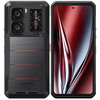
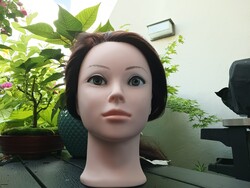

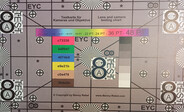



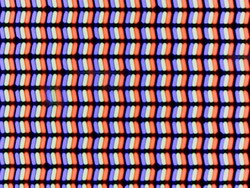
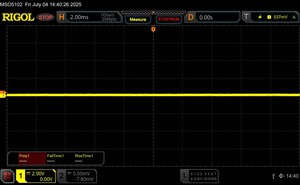

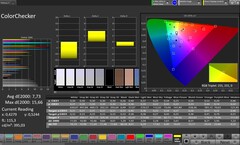
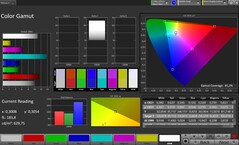

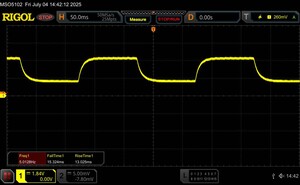

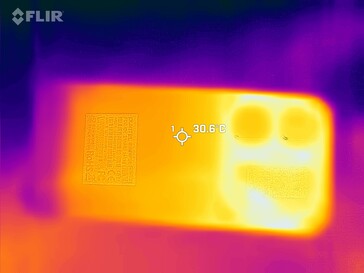
 Total Sustainability Score:
Total Sustainability Score: 



